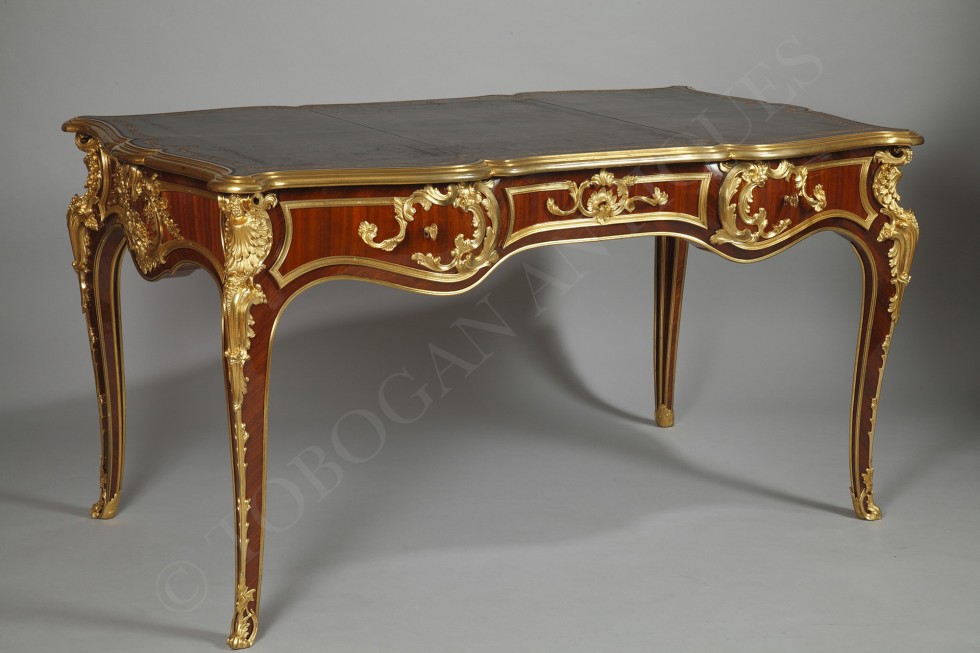Ref. 1224/19
H. Dasson
Cabinet-maker
(1825-1896)
Secretary with painted medallions
Signed henry Dasson
France
Circa 1880
Height : 138 cm (54,3 in.) ; Length : 95 cm (37,5 in.) ; Depth : 40,5 cm (16 in.)
A very fine Louis XVI style upright secretary, executed in ambony and palisander veneer, finely decorated with painted medallions presenting mythological scenes. Mahogany insider. Fine chiseled and gilded bronze mounts. « Brocatelle d’Espagne » marble stretcher and top. This work was inspired by the 18th century models executed by Adam Weisweiler.
Biography
As a cabinet-maker and a bronze-caster, Henry Dasson executed in his Paris workshop, installed at 106 rue Vieille-du-Temple, sumptuous copies of royal 18th century models and some pieces of his own modified 18th century design. He used for his pieces of furniture and « objets d’art » the very finest ormolu mounts with high quality mercurial gilding. He purchased the firm of the cabinet-maker Charles Winckelsen upon his death in 1871 and mainly produced in the Louis XV and Louis XVI style. His participation at the Paris 1878 Universal Exhibition was highly remarked with a Louis XVI style table, all in bronze and considered as a « chasing masterpiece », and a copy of the famous King Louis XV desk (original piece exhibited at the Versailles Castle), which was also admired by critics. At the 1889 Universal Exhibition, he won a « grand Prix » for his beautiful furniture. Dasson closed down his business in 1894.
Adam Weisweiler (1744-1820) became Master in cabinet-making on March 26th 1778. He settled his workshops in Paris, on Faubourg-Saint-Antoine Street. Weisweiler was one of the great masters of the Louis XVI style. From German origin, he is assumed having received his training in the workshop of Roentgen. He came to France before 1777, year of his wedding in the capital city. He worked primarily for the « marchand-merciers » like Daguerre, whom sold Weisweiler’s works to Queen Marie-Antoinette. Very talented in his art, he developed a personal style, combining various materials such pietra-dura, lacquer or Sèvres porcelain plaques. Unlike most of cabinet-makers, the Revolution didn’t affect his production; Weisweiler worked under the First Empire for Queen Hortense. A large part of his production is now displayed in public collections such in the Louvre Museum, the Paris Decorative Arts Museum, the New York Metropolitan Museum of Art.
Contact us
Tobogan Newsletter
If you want to be up-to-date with our new acquirings you can sign up to our newsletter.









